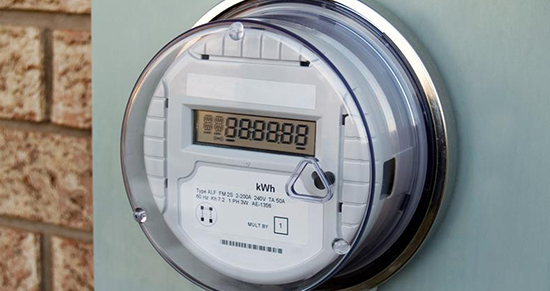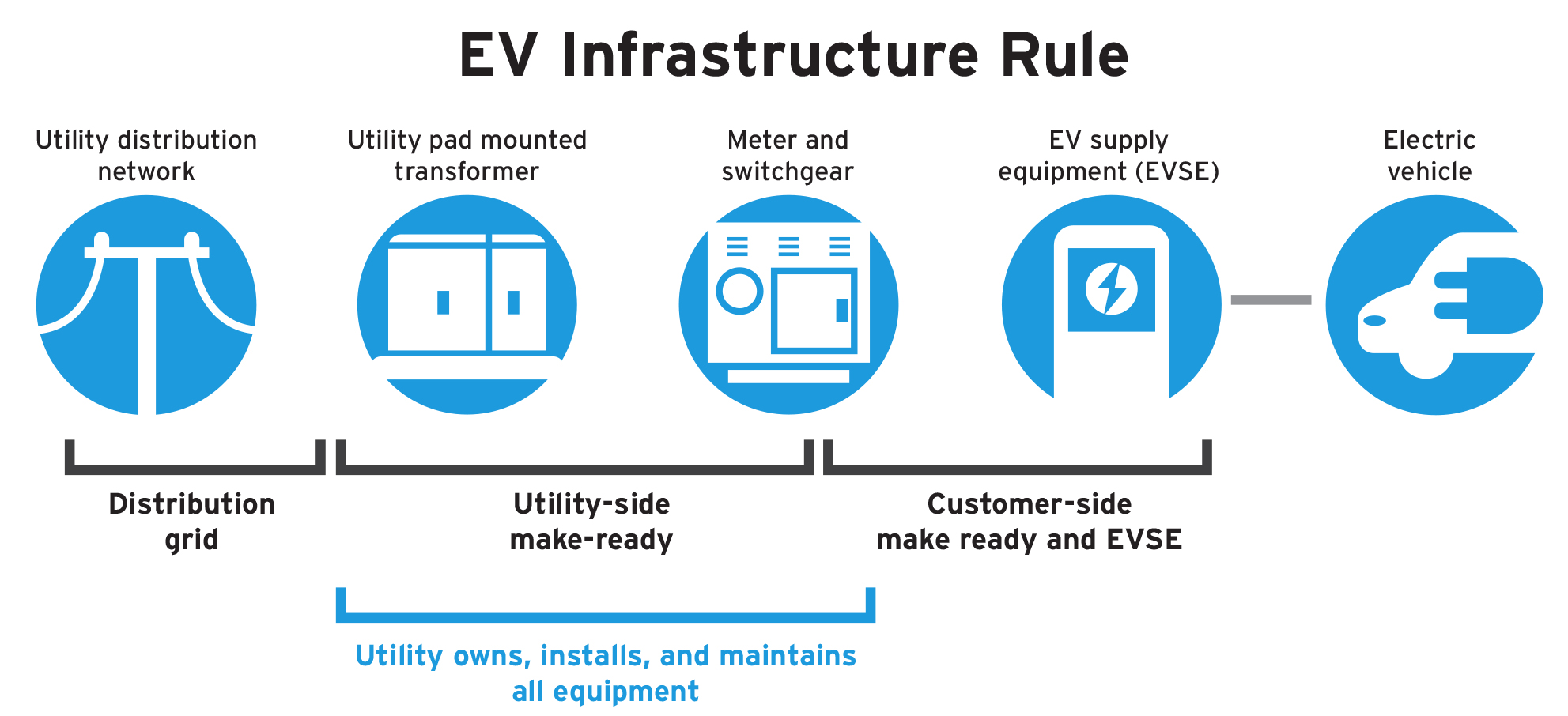EV Infrastructure Rule

Effective August 20, 2025, SDG&E has closed Rule 45 to new applications and will terminate contracts without a Notice to Proceed (NTP),
due to a funding cap established by the CPUC in the 2024 General Rate Case.
California's Push Toward Advanced Clean Vehicles
Transportation is the largest source of air pollution in California. To facilitate the transition to zero emission transportation, California Assembly Bill 841 calls for “widespread transportation electrification” through “increased access to the use of electricity as a transportation fuel.” This push toward advanced clean vehicles should facilitate increased use of electric vehicles, while reducing petroleum use, meeting air quality standards and improving public health.
Reducing EV Infrastructure Barriers
SDG&E’s EV Infrastructure Rule (Rule 45) is an optional new service pathway for separately-metered EV charging sites outside of single-family homes. Rule 45 is an alternative to Rule 16 and does not include a customer allowance. Instead, San Diego Gas & Electric® (SDG&E®) is authorized to design, install, own and maintain all electrical equipment and associated construction between the distribution system and meter for customers taking service under Rule 45. SDG&E will install and own this utility-side equipment in exactly the same way as EV infrastructure programs like Power Your Drive.

SDG&E’s reduced charging rates and simpler billing make the transition to electric vehicles easier and more cost-effective. Eligible sites can opt-in to SDG&E’s new Electric Vehicle-High Power (EV-HP) rate plan, designed to eliminate demand charges and provide customers with simple, stable, monthly billing.
Did You Know?
Power Your Drive helps make charging infrastructure more accessible for all and will support our state in reaching our ambitious clean transportation goals.
Key Rule Differences
The key differences between Rule 45: EV Infrastructure and Rule 16: Service Extensions is that Rule 45 covers construction costs on the utility side of the meter and does not set a customer allowance based on future load. Rule 45 does not allow for Applicant design, and has a detailed reporting requirement for costs, the number of chargers and capacity of all chargers.
EV charging customers who are eligible to take service under Rule 45 may opt to take service under Rule 16 (for example, if the Applicant prefers to use Applicant design). Distribution Line Extensions to EV charging sites will continue to be governed by Rule 15.
Applicant Requirements
To take service under SDG&E’s EV Infrastructure Rule an Applicant must:
- Be located outside of a single-family home
EV charging installed in multi-unit dwellings can participate if the EV charging equipment does not take service on a residential rate
- Install all behind-the-meter equipment necessary to provide EV charging service
This includes the panel, conduit and EV charging equipment – SDG&E will not begin installation work until the Applicant has provided proof of commitment to install this equipment, such as a purchase order or receipt, and must agree to maintain the EV charging equipment for at least five years
- The EV charging equipment must be separately metered
A service extension installed under Rule 45 can serve only EV charging equipment and associated devices like card readers and immediate lighting
- Not be participating in an approved SDG&E EV infrastructure program
Such as Power Your Drive for Fleets or Power Your Drive for Workplaces
- Pay the cost of other requirements
Including environmental studies, issue mitigation, applicant-owned protective structures and voluntary undergrounding.
What to Expect
To get started on an EV infrastructure project, contact SDG&E’s Builder Services. Be prepared to provide key contacts for your project, start and end dates, special site conditions to consider, as well as any additional services needed from SDG&E such as relocation, new service or other upgrades. After your initial application is reviewed, SDG&E will work with you to gather required documents like civil and architectural plans, parcel maps and any other required materials to initiate work
More Information
- See our Fact Sheet.
- Rule 45 Energization Steps
- For more information, visit Builder Services or call 858-636-6805.